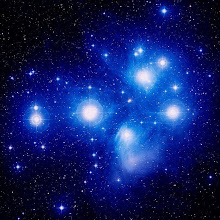
Today marks the 40th anniversary of the first human steps on the giant orb that lights our skies at night and captivates our collective imagination. And of course, in this instant news age of Twitter and blog reporting (ahem), it's no surprise that pretty much every media outlet is covering the event—and that businesses are using any angle they can to cash in.
But what was surprising to me about the day in question, July 20, 1969 (N.B. it was already July 21st in the U.K. and points east when Neil Armstrong put his boot down), was that the only way people could really follow along was via radio. I'd heard stories of people watching the news on television that night and of feeling glued to the set as the reports came in. Yet until yesterday, when, prompted by the death of newscaster Walter Cronkite I watched the CBS broadcast (see below) for the first time, I had never realized just how in-the-dark the country and the world really was about what was happening. And frankly, it starts to make sense why all these conspiracy theorists might have been so skeptical!
As you can see for yourself, the broadcast included a crude animation of what was supposedly happening as the Eagle landed. And that was it, folks! The only other clue people had that this was actually taking place was the rather anticlimactic radio broadcast between the Eagle astronauts and NASA's Houston command center. Today, of course, we take for granted that it's standard operating procedure for space agencies to provide live video feeds from high-resolution cameras flanking rockets and other spacecraft as they're flung through the atmosphere, into space, and onto the surfaces of other worlds. So it really makes me appreciate just how far we've come since then.
As for our future on the moon, much has been discussed about the next couple of decades of human spaceflight, and I'm somewhat ambivalent about our current direction. Certainly I'd love to see humans achieve ever-more impressive feats and conquer the cosmos one planet at a time. But I'm not sure that setting up a base on the moon is going to be our best way to make that happen. I would definitely want to make sure that programs like Cassini and New Horizons, which are doing advanced scouting to help us figure out which are really the most interesting and worthwhile places to send humans, get properly funded before we start sending people to hang out on the rather dull and relatively uninteresting moon. (Sorry, moon; nothing personal.) Either way, the leaders at NASA and the other space agencies will have a lot of hard questions to answer in the coming years, and I don't envy their difficult task.
For today, though, I think we can all agree that taking a look back at what we've achieved so far makes a lot of sense, especially when old-school science fiction is so much fun! Among other things, this little media frenzy might very well be a career-changing inspiration to a future planetary scientist or astronaut-in-waiting. And who knows? Perhaps that young girl watching a moon special on TV this evening will grow up to be the first person to walk on Enceladus or Titan or Europa—all moons with a lot more promise of life than our cold, yet ever-enchanting, Luna.

Wish I could give you a little "thumbs-up" icon like on Facebook.
ReplyDeleteHappy 40th Anniversary Apollo!!!